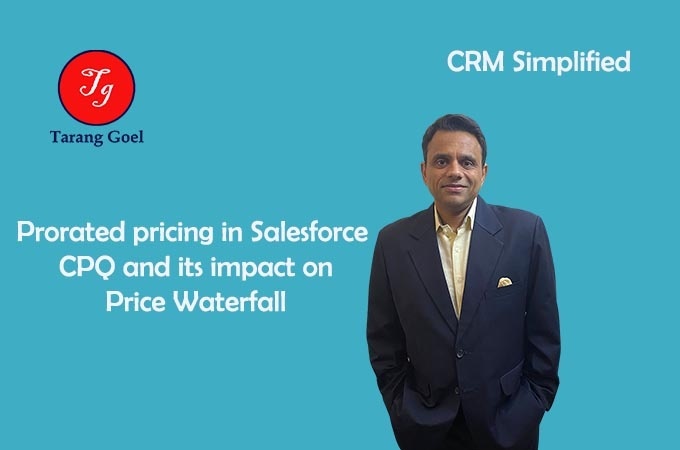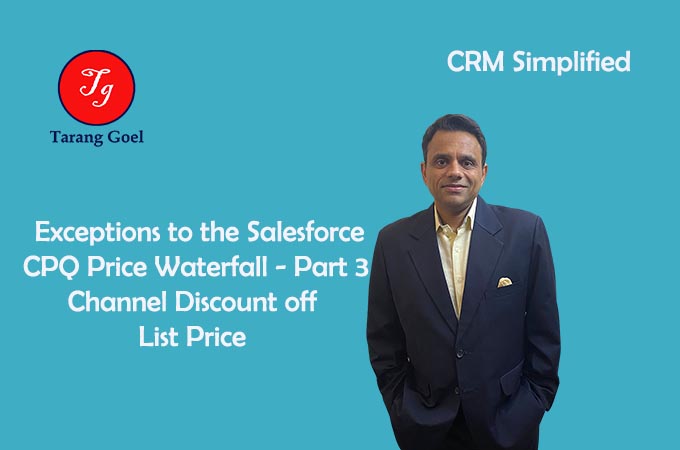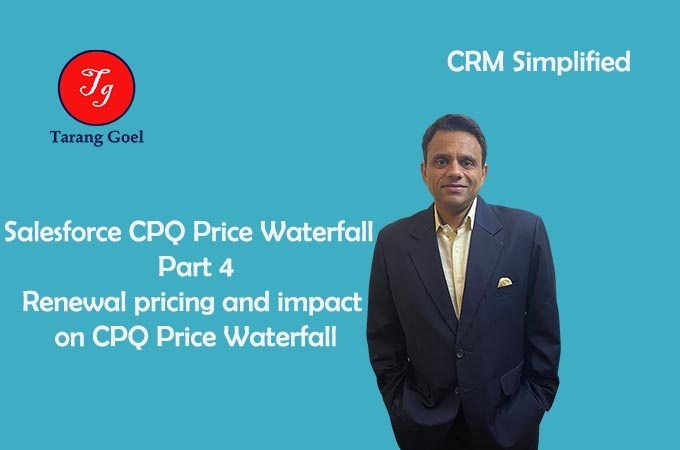So, folks before I do the 4th part on the exceptions to the CPQ Price Waterfall, I wanted to cover the topic of Prorated pricing and how it is calculated in the Salesforce CPQ and it’s impact on Price Waterfall and on renewals. If you want to read more about
Calculation Sequence of Salesforce CPQ Price Waterfall The standard calculation sequence of Salesforce CPQ Price Waterfall is as follows: List Price->Regular Price->Customer Price->Partner Price-> Distributor Price->Net Price Partner price is calculated fourth in the sequence and is derived by deducting Partner discount from the Customer price. Distributor Price is calculated
Calculation Sequence of Salesforce CPQ Price Waterfall The standard calculation sequence of Salesforce CPQ Price Waterfall is as follows: List Price->Regular Price->Customer Price->Partner Price->Distributor Price->Net Price Partner price is calculated fourth in the sequence and is derived by deducting Partner discount from the Customer price. If you want to know
Calculation Sequence of Salesforce CPQ Price Waterfall The standard calculation sequence of Salesforce CPQ Price Waterfall is as follows: List Price->Regular Price->Customer Price->Partner Price-> Distributor Price->Net Price Customer price is calculated third in the sequence and is derived by deducting Additional discount from the Regular price. If you want to
Renewals: When a customer buys again in continuation with the last sale then it can be termed as renewal. Renewal can also be called as renewal of the last sale. Let’s take some examples to understand Renewal process in CPQ. Example 1– Tango Foods sells to KitchenFoods regularly. KitchenFoods has






Comments